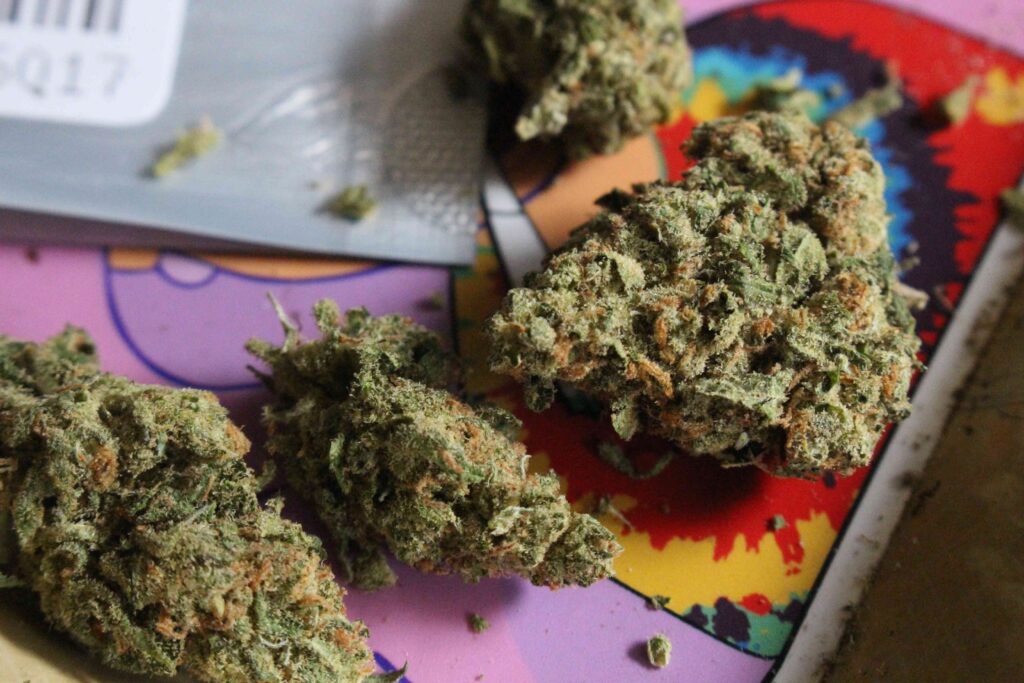MANTRAYA ANALYSIS #93: 17 OCTOBER 2025
BIBHU PRASAD ROUTRAY
Abstract
India pursues a zero-tolerance drug policy, yet cannabis remains paradoxically positioned within this framework. Despite constituting 41 per cent of narcotics seizures, cannabis holds deep cultural significance in India and is widely used. The government’s subtle distinction between cannabis and ‘harder drugs’ like cocaine suggests that resistance to legalisation remains largely cosmetic, given widespread consumption and growing reform advocacy.

Arrests and Seizures
In the last week of September 2025, 11 students were arrested in Mangalore, and 12 kilograms of cannabis, which they allegedly procured from Odisha, were seized from them. In August, in Assam’s Cachar district, two people were arrested for transporting cannabis worth six million rupees. That same month, in the national capital territory, three individuals were detained for allegedly supplying over 100 kilograms of cannabis in a truck from Odisha to Delhi. This sample of recent seizures and arrests highlights the widespread smuggling of the banned substance that dominates the narco trade in the country.
A Whole-of-Government Approach
India is pursuing a much-publicised whole-of-government, zero-tolerance approach to ensure a narcotics-free country. Seizures of synthetic drugs, cocaine, and pharmaceutical drugs used as psychotropic substances have increased substantially. For instance, in 2024, 80 quintals of ATS (Amphetamine-Type Stimulants) were seized compared to 34 quintals in 2023. Similarly, the quantity of Cocaine seized increased from 292 kilograms in 2023 to 1,426 kilograms in 2024.
Still, the narrative of the war on cannabis is a bit twisted.
Cannabis constituted 41 per cent of the total narcotics seizures of 1,330,600 kilograms compared to the 39 per cent claimed by the opiates. Smuggling of cannabis into India is minimal compared to domestic production, though some enters from Nepal, together with high-potency hydroponic weeds from countries such as Canada, the United States (US), or Thailand. These arrive in urban black markets through small parcels or personal courier routes.
Contentious Subject
Yet cannabis remains a contentious subject in India, owing mostly to its deep-rooted cultural and historical significance. While the dried and crushed buds of this plant (colloquially known as ganja, hashish, or charas) are banned, the leaves and stems are legal and are used to prepare bhang, a milky drink that is popularly consumed on festivals like Holi. The buds and the flowers have a high tetrahydrocannabinol (THC) and cannabinoid (CBD) content as compared to the leaves.
Cannabis was cultivated freely and abundantly across India till 1985. Following the colonial British practice, it was taxed by the government for non-medical use rather than being outright prohibited. The farming sustained countless farmers’ livelihoods until criminalisation that year by a Congress-led government using the National Drugs and Psychotic Substances (NDPS) Act in 1985. The ban was on the use and production of its resin, flower, and fruit tops, although the leaves for bhang remained exempt. The ban, evidence suggests, had little impact on the volume of production. Adaptation and secrecy crept in. Farmers, for instance, in the hilly regions, took their farming to higher altitude fields, to protect them from police raids.
That ban is seen by many as a result of prohibitionist Western pressure, especially from the US, which did not factor in India’s cultural practices. Decades after the ban, a former member of Parliament criticised the ban as “elitist,” arguing that criminalising traditional cannabis use by the poor pushes them toward more harmful and expensive alcohol consumption. In 2017, a minister in the ruling BJP government argued in favour of legalising marijuana (which refers to dried leaves, flowers, stems, and seeds of the cannabis) for medical purposes to curb drug abuse. She argued further that marijuana serves a purpose in relieving pain during cancer treatment. A private member’s bill, mostly to highlight the issue, was moved in the parliament in 2018. Although it failed to pass, MPs across political parties have regularly voiced their support for legalising and regulating marijuana.
Wide-Spread Use
By the government’s own estimates, 29 million people in India—roughly about 3.3 per cent of its population—have reported having used some form of cannabis in 2018. For some states, such as Haryana, the percentage rose to 7.5 per cent. National capital Delhi, another report suggested, consumed 32.38 metric tons of cannabis that year. Had cannabis been legal and taxable, the government, another report lamented, could have raised around Rupees 725 crore ($81 million at the present rate and $98 million approx. as per the exchange rate of 2020). The punitive measure, therefore, highlights a stark disconnect between law and lived practice.
Even now, finding cannabis in popular hill stations of states such as Himachal Pradesh isn’t a big deal. “Malana cream,” grown in a remote village called Malana, is touted as the world’s purest and most potent cannabis. In the southern state of Kerala, the “Idukki Gold” variant may have become elusive, but “Sheelavathi,” grown within Andhra Pradesh and Odisha, isn’t too hard to find. Priced from Rupees 80,000 to 120,000 per kilogramme (about $1,000 to $1,500), the affordable Sheelavathi is a much sought-after narcotic item in northern India. In comparison, Malana Cream and Idduki Gold sell for Rupees 500,000 to 800,000 per kilogramme ($6,000 to $10,000 approx.). Not surprisingly, in 2024, 70 per cent of the 2.3 million kilograms of cannabis confiscated by India’s Narcotics Control Bureau was the Sheelavathi variety.
While citing “cultural practices” in favour of a banned drug may be abhorred in many circles, Hemp (scientifically known as Cannabis sativa; i.e. cannabis with less THC) has multiple benign uses in several states of the country. Hemp cultivated for industrial use in India, such as hemp fibre and seeds, is legal in most states as long as it meets the required THC levels of less than 0.3 per cent. It is used for weaving baskets and handlooms, thus providing a vocation for women in the villages. In the Kangra valley of the state of Himachal Pradesh, it is also used to make reusable sanitary pads as well as nutritional products. Cannabis is further used as a vegetable for survival for the locals in the area during the harsh, cold months of the year.
Conclusion
While maintaining the illegality of cannabis in India, the government subtly differentiates between cannabis and the “more harmful and addictive drugs” such as cocaine and methamphetamine. This intersection between “more or less harmful,” “legality and illegality,” and those “smuggled from abroad and produced domestically” is bound to reflect in the official implementation of measures and keep windows open for continued trade and use of cannabis. With millions already consuming it despite legal restrictions, growing economic arguments for legalisation, and the government’s own distinction between cannabis and “harder” drugs, any resistance to a policy change appears only cosmetic.
(Dr. Bibhu Prasad Routray is the Director of MISS. This analysis has been published under the ongoing ‘Organized Crime and Illicit Trafficking’ project. All Mantraya publications are peer-reviewed.. All Mantraya publications are peer-reviewed.)




